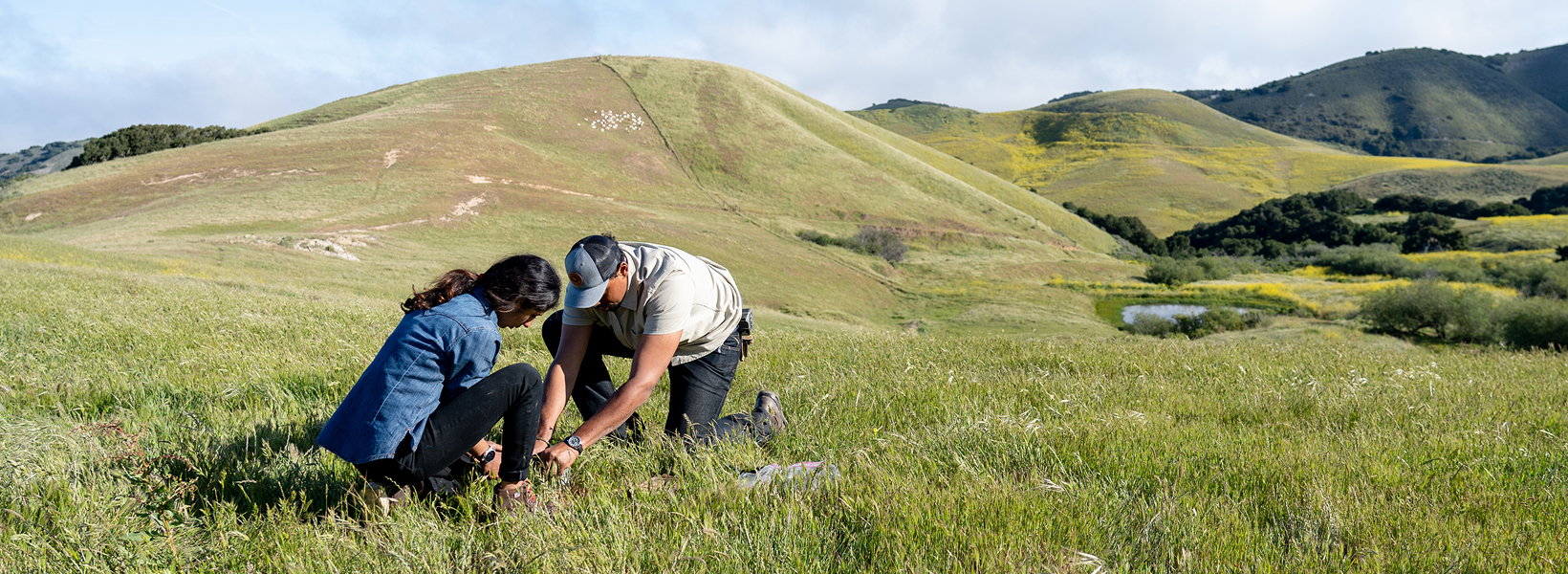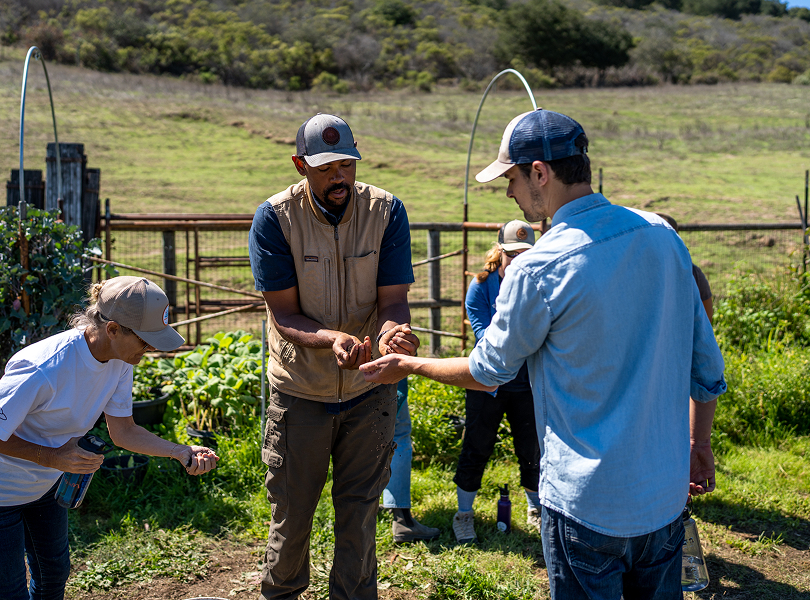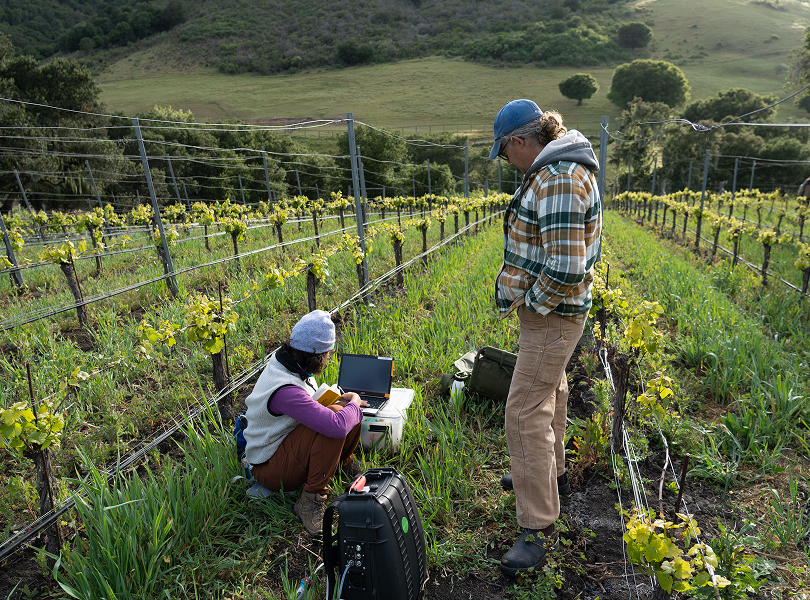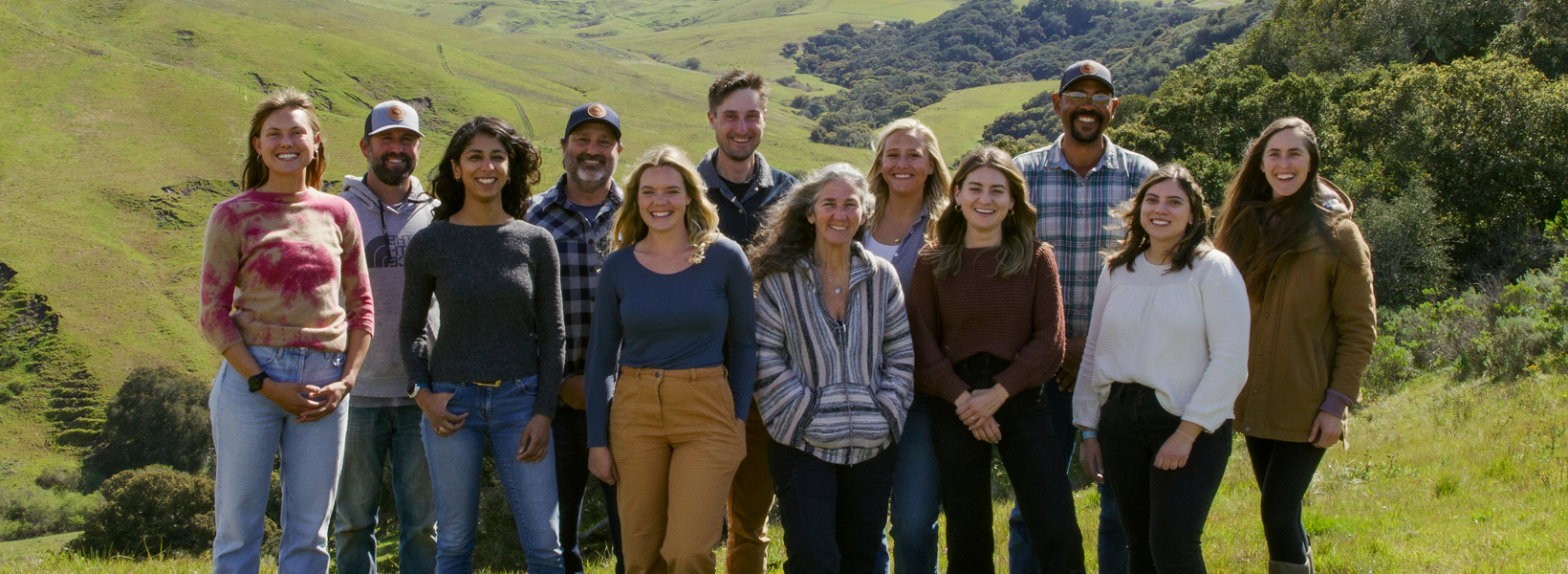White Buffalo Land Trust was founded in California in 2018 by Steve Finkel and has quickly emerged as a leading force in regenerative agriculture.
As the stewards of the spectacular 1,000-acre Center for Regenerative Agriculture at Jalama Canyon Ranch, the White Buffalo Land Trust (WBLT) team leads a global hub for regenerative land stewardship, monitoring and research, education and training, and enterprise development.
More than just an organisation, WBLT is a movement, an inspiring destination, a progressive research hub, an incubator for transformative ventures, and a convener of collaborative partnerships. It’s a place of regenerative food brands, producers, and supply chain innovators.
At its core, WBLT is redefining what it means to be in relationship with the land. Through holistic project design and dynamic partnerships the team is not only restoring ecosystems but also nourishing communities.

Jesse Smith: Career Journey
Jesse Smith has been a cornerstone of the organisation since its early days, joining as the organisation’s first employee and now serving as the Director of Land Stewardship.
His professional journey in agriculture began in 2012, when he and his extended family started a diverse farming operation with a focus on cultivating ecological function and long-term resilience in a collaborative multi-generational project focused on moving from “oil to soil” and realigning capital investments. This entity operated as Regenerative Earth Farm.
“On our farm we aimed to address the food system’s needs by enhancing the ecological functions of land and water systems, rather than merely avoiding extraction,” he said.
By “extraction,” Jesse refers to conventional approaches—including some organic systems—that treat land as an inert medium, reliant on external inputs and management practices that don’t always account for ecosystem health. “While certification systems like USDA Organic are a meaningful step,” he says, “we see deeper potential in place-based management that actively regenerates landscapes through thoughtful design, regional nutrient cycling, and working within the context of each land base.”
That philosophy continues to guide his work at WBLT. Since joining in 2018, Jesse has helped shape and implement projects that integrate regenerative principles into agriculture at scale.
With a core team of 12 and an ever-expanding group of fellows and volunteers, Jesse is bringing his experience and passion to a larger scale—working alongside the team to revitalize vineyards and orchards historically managed using conventional practices, restore oak woodlands, and evolve holistic grazing approaches to support pasture health.
Education and community involvement are central to their work. Year round, people are invited to experience regenerative agriculture firsthand.
Jalama Canyon Ranch
White Buffalo Land Trust began on a small 12-acre farm in Summerland, CA before expanding its efforts with the acquisition of Jalama Canyon Ranch (JCR) in Santa Barbara County, California.
As the home of WBLT, Jalama Canyon Ranch serves as a “living lab” for regenerative agriculture—a place where principles are applied, studied, adapted, and shared. As part of the Savory Institute’s global network of holistic management hubs, the ranch is a center for experimentation, education, and ecosystem restoration.
The ranch sits at a unique confluence of four different eco-regions and these diverse landscapes support an equally diverse range of plants and animals. The property lies along a coastal curve that bends south from Santa Barbara to the Mexican border—an area warming at nearly twice the rate of the continental U.S.—making it a vital site for climate-adaptive land stewardship.
“Our approach to land stewardship has been to actively improve the land, not just avoid negative impacts” says Jesse.
“We’ve been transitioning conventional vineyard management into regenerative organic practices – introducing biological inoculants, cover crops, and native plant hedgerows to increase biodiversity and reduce erosion.”
“Similarly, cattle and goats are managed through holistic practices that prioritise the health of native perennial grasses.”
Today, the ranch supports a dynamic calendar of events, including holistic management trainings, field days, and educational programs. It also serves as a site for collaborative research with universities and technical partners, helping to advance knowledge and build capacity in regenerative land management.


Bigger Picture Change
While Jalama Canyon Ranch serves as the heart of their place-based work, the organisation’s mission extends beyond the boundaries of the land.
Through Figure Ate—a food brand created under the umbrella of the nonprofit—WBLT is helping build new pathways from regeneratively grown food into the marketplace.
Figure Ate offers nutrient-dense food products like persimmon vinegar and beef biltong. The brand was born out of a desire to reimagine the food journey from soil to shelf—creating direct connections between healthy ecosystems, mindful producers, and informed customers.
Jesse Smith’s creativity and early experiences in agriculture helped inform the product development process. From working with preservation techniques and understanding nutrient cycling, to exploring traditional methods of fermentation, curing, and drying, these skills now play a role in how Figure Ate products are developed.
The persimmon vinegar, for instance, emerged from a desire to bring value to imperfect fruit that might otherwise go to waste—an approach that blends regenerative agriculture with food system innovation. Paired with the biltong, which uses salt and vinegar as natural preservation agents, both products reflect a commitment to thoughtful sourcing and minimal processing.
Figure Ate also represents a key part of their long-term strategy: supporting a shift in consumer awareness and demand for regenerative goods while building an entrepreneurial nonprofit model that generates sustainable revenue.
As a member of the Regen Brands Coalition, Figure Ate collaborates with like-minded food companies to expand the marketplace for regenerative products—creating more viable pathways for land stewards to bring their harvest to market.
“There’s a real need for innovative economic models that decouple agricultural value from commodity prices and incorporate payments for ecosystem services,” says Jesse.
“When we recognize and reward the environmental benefits of regenerative agriculture—and connect those benefits to the marketplace—we can make these practices more viable for producers and more visible to consumers.”

Partnerships
Partnership in the truest sense, is part of the DNA of White Buffalo Land Trust. They play a vital role in how the land is stewarded, research is conducted, and knowledge is shared.
Their collaboration with Sandhi Wines, who craft wines from the vineyard on the ranch, reflects a shared commitment to quality and ecological responsibility.
Similarly, WBLT partners with Richards Regenerative to raise cattle holistically at the ranch – an integral part of their landscape management strategy.
White Buffalo Land Trust currently maintains over 70 partnerships. These collaborations support farmer and rancher training, student and community education, artist residencies, ecological monitoring, and long-term research efforts.
Beyond the ranch, their work extends across California to support systemic change in agriculture.
In the Central Valley, White Buffalo is a founding partner of The Almond Project—a multi-year, farmer-led collaboration with Treehouse Almonds and a coalition of organizations committed to reimagining almond production. The initiative includes a field trial comparing soil health across two 80-acre almond blocks—one conventional, one organic—designed to generate insight, build resilience, and foster shared learning within the broader almond community.
In a separate project, White Buffalo is collaborating with Ben & Jerry’s and the Gonzales-Siemens Family Farm on a five-year scientific trial on 13 acres of almonds in Wasco, California. The goal is to apply regenerative practices that improve soil health and biodiversity, while also helping to build more values-aligned supply chains. Ben & Jerry’s is purchasing the almonds from this trial for use in their non-dairy ice cream line.
“These kinds of partnerships bring together like-minded organizations with a shared vision for global sustainability,” says Jesse.
Macdoch Foundation is proud to partner with White Buffalo Land Trust, supporting the organisation’s philosophical and practical work in driving systemic change in the US.
“Our goal is to continually innovate and adapt our methods to meet the evolving challenges of our environment,” Jesse says.
“We want to be known as a global destination for regenerative agriculture.”
Join our community
Follow us on LinkedIn for the latest partner stories,
updates and insights shaping the sector.
Macdoch Foundation acknowledges the First Peoples as the first inhabitants and Traditional Custodians of the lands where we live, learn and work. We pay our respects to Elders past, present and future.
